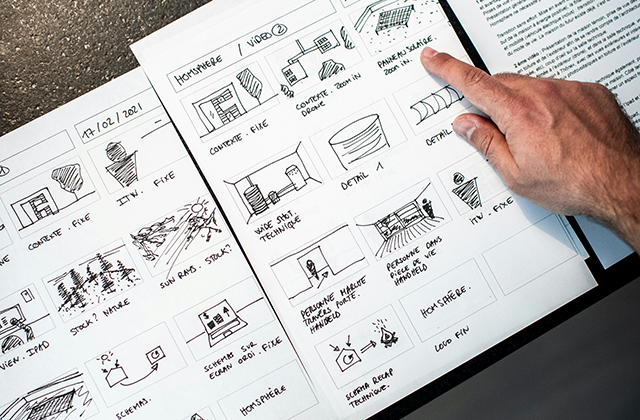Storyboard editing is an essential process in filmmaking, serving as the bridge between conceptual ideas and the final cinematic product. It is a meticulous art that enhances film narratives, ensuring every frame aligns with the director’s vision while providing clarity for production teams. In this guide, we delve into the fundamentals of storyboard editing, focusing on how it refines storytelling and incorporates visual precision. We will also explore the growing importance of animatics artists in cities like Sydney, where the filmmaking industry thrives on innovation and collaboration.
What is Storyboard Editing?
Storyboard editing involves reviewing, refining, and organizing storyboards to create a cohesive and visually compelling narrative. A storyboard serves as the visual script of a film, showcasing the sequence of shots, camera angles, and character actions. Editing these storyboards ensures that:
- Narrative Flow: Scenes transition seamlessly, enhancing the story’s emotional arc.
- Visual Clarity: Frames clearly convey the intended actions and emotions.
- Technical Feasibility: Camera angles, lighting, and movements are practical for the production team.
The Role of Storyboard Editing in Filmmaking
1. Strengthening Narrative Coherence
A well-edited storyboard ensures that the story’s pacing and structure align with the script. It helps directors identify gaps in the narrative, such as abrupt transitions or underdeveloped scenes, and rectify them before production.
2. Visualizing Complex Scenes
For action-packed sequences or intricate visual effects, storyboard editing breaks down each element into manageable frames. This process is critical for animatics artists in Sydney and beyond, who often transform these storyboards into animated previews, known as animatics.
3. Enhancing Collaboration
Storyboard editing provides a unified visual reference for the entire production team, fostering better communication among directors, cinematographers, and animatics artists.
Key Steps in Storyboard Editing
Step 1: Review Initial Storyboards
Begin by analyzing the initial drafts created by the storyboard artist. Focus on:
- Consistency: Ensure characters, props, and settings remain uniform across frames.
- Pacing: Check that each scene’s duration aligns with the intended emotional tone.
- Transitions: Evaluate how effectively one scene flows into the next.
Step 2: Refine Visual Elements
Work closely with animatics artists to:
- Adjust compositions for stronger visual impact.
- Incorporate annotations for camera movements, lighting, and sound cues.
- Highlight key frames that capture pivotal moments in the narrative.
Step 3: Test the Storyboard with Animatics
In cities like Sydney, animatics artists play a crucial role in this phase. They create animated versions of the storyboard, allowing directors to:
- Assess the pacing and rhythm of the film.
- Identify and address potential issues with shot sequences.
- Experiment with alternative camera angles or movements.
Step 4: Collaborate with Stakeholders
Engage with key stakeholders, including:
- Directors: Ensure the storyboard aligns with their creative vision.
- Producers: Confirm that the visual plan adheres to budgetary and logistical constraints.
- Animatics Artists: Validate that the storyboard transitions smoothly into animated previews.
Step 5: Finalize the Storyboard
Once revisions are complete, compile the final storyboard with:
- Sequentially organized frames.
- Detailed annotations for production.
- Digital versions for easy distribution among team members.
The Role of Animatics Artists in Storyboard Editing
Who Are Animatics Artists?
Animatics artists specialize in transforming static storyboards into animated sequences. They use software tools to add motion, sound, and timing, providing a dynamic preview of the film. This process is invaluable for filmmakers in Sydney, where a burgeoning creative industry demands high-quality pre-visualization.
How Animatics Enhance Storyboard Editing
- Testing Visual Narratives: Animatics allow filmmakers to simulate the final film, helping them refine pacing, transitions, and shot composition.
- Improving Communication: Animated storyboards convey complex ideas more effectively than static frames, facilitating better collaboration.
- Reducing Production Risks: By identifying potential issues during pre-visualization, animatics save time and resources during shooting.
Sydney’s Animatics Scene
Sydney boasts a vibrant community of animatics artists who contribute to local and international film projects. These professionals leverage cutting-edge technology to deliver high-quality previews, ensuring that filmmakers have a clear vision before heading to set. Their expertise is particularly valuable for:
- Independent filmmakers seeking cost-effective pre-visualization.
- Large-scale productions requiring detailed planning for complex scenes.
- Advertising agencies creating dynamic storyboards for commercial campaigns.
Tools for Storyboard Editing and Animatics
Storyboard Editing Software
- Storyboarder: A free, user-friendly tool for creating and editing storyboards.
- Toon Boom Storyboard Pro: A professional-grade software used by animatics artists in Sydney and globally.
- Adobe Photoshop: Ideal for detailed illustrations and annotations.
Animatics Tools
- Adobe After Effects: Popular for creating smooth transitions and effects in animatics.
- Blender: A versatile, open-source tool for 3D animatics.
- Harmony by Toon Boom: Widely used for 2D animation and animatics creation.
Tips for Effective Storyboard Editing
- Collaborate Early: Involve animatics artists and production teams from the start to align creative and technical goals.
- Keep It Flexible: Be open to revising the storyboard as new ideas emerge.
- Focus on Key Frames: Prioritize editing pivotal moments that define the story.
- Test Continuously: Use animatics to validate the storyboard’s effectiveness.
- Leverage Local Talent: Collaborate with animatics artists in Sydney to benefit from their expertise and industry knowledge.
Conclusion
Storyboard editing is a cornerstone of effective filmmaking, transforming conceptual ideas into actionable visual plans. By refining narrative flow, enhancing visual clarity, and collaborating with animatics artists, filmmakers can bring their stories to life with precision and creativity. For those in Sydney, the city’s thriving film industry and talented animatics artists provide an unparalleled resource for mastering this essential art. Whether you’re crafting a blockbuster or an indie masterpiece, embracing storyboard editing will elevate your film to new heights.
